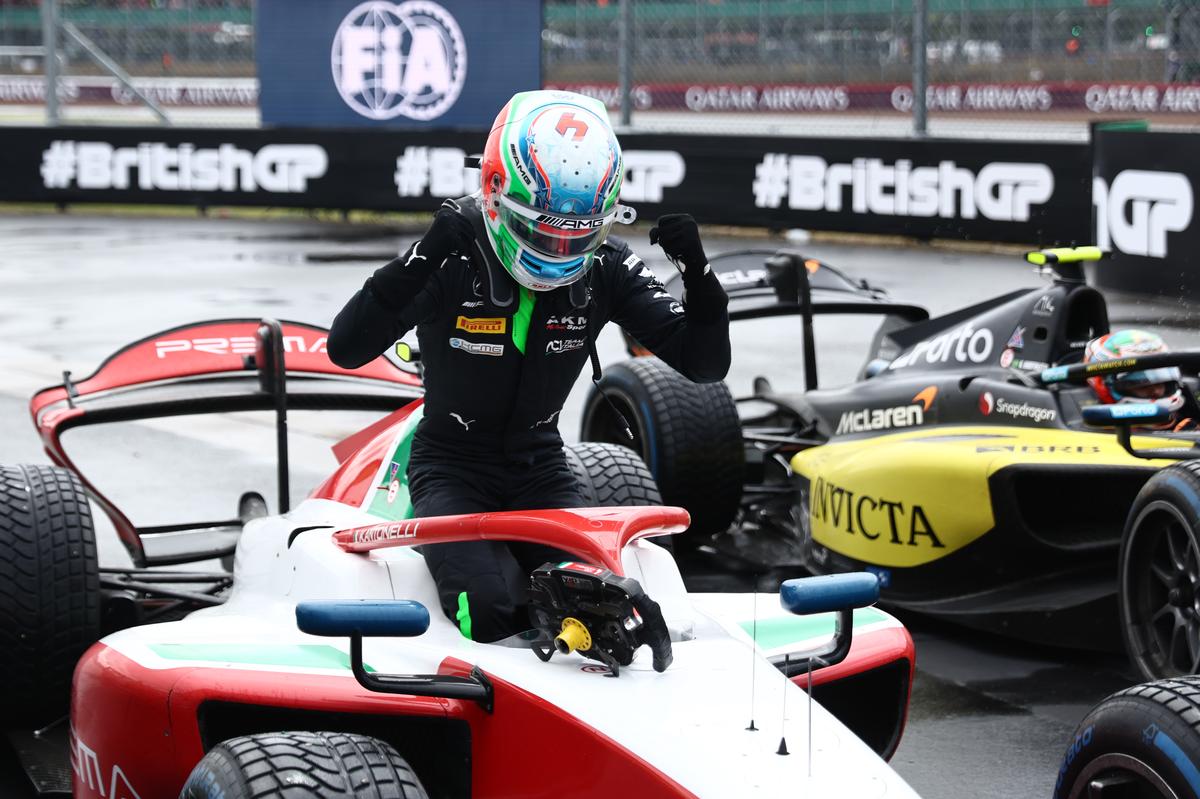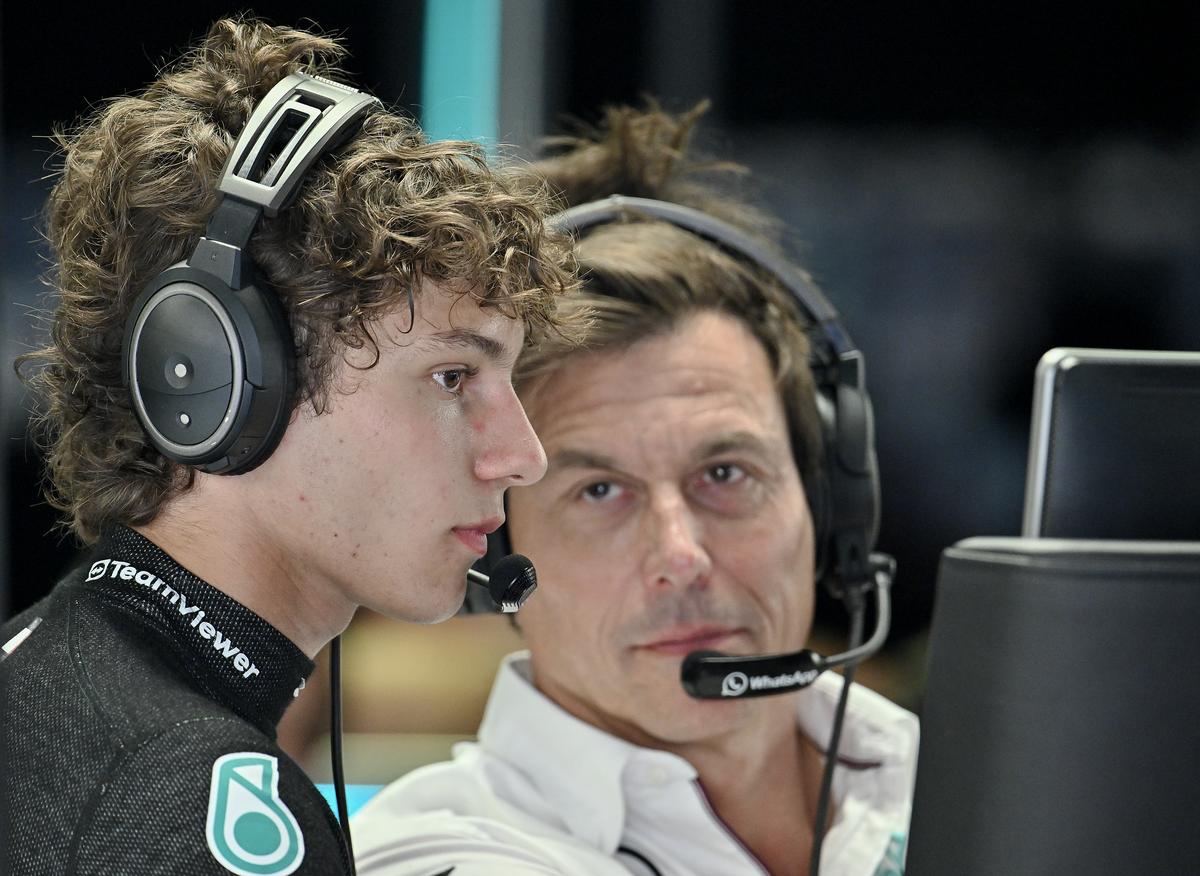One of the greatest thrills of being a connoisseur of sport is watching prodigies arrive on the biggest stage and challenge the established order. Think of a 16-year-old Sachin Tendulkar making his international debut in Pakistan, Lionel Messi charming Barcelona in his teens, or Boris Becker and Martina Hingis winning a singles Major before turning 18.
These instances don’t occur often, and when they do, there is a buzz, not just in the respective sporting bubble but also in the wider world.
In the world of Formula One, one such example was Max Verstappen’s debut as a 17-year-old in 2015. People were shocked that a kid who was not legally allowed to drive a road car in most countries could race the fastest cars on earth.
The issue prompted so much hand-wringing that the FIA changed its rules, mandating 18 as the minimum age for receiving the Super Licence needed to compete in F1.
Now, almost a decade later, there is considerable excitement again in the paddock following Mercedes’ decision to draft rookie Andrea Kimi Antonelli to replace the Ferrari-bound Lewis Hamilton, statistically the most accomplished driver in the sport’s history, in 2025.
Meteoric rise
The 18-year-old Italian has had a meteoric rise in the junior categories. He joined the Mercedes Young Driver Programme in 2019 as a 13-year-old. He aced the karting scene and, in 2022, won the Italian F4 and ADAC Formula 4 championships, dominating both series and making the smooth transition from karts to cars.
In the Italian F4, he won 13 out of 20 races, and in the German F4, he won nine out of 15, showing his prowess. He dominated the Formula Regional Middle-East and Formula Regional European championships the following year, clinching both titles easily.
The staggering success was all the evidence Mercedes F1 team boss Toto Wolff needed to draft Antonelli directly into the FIA Formula 2 championship this year, skipping F3 altogether.
Although his performances in F2 haven’t been stellar, mostly because of his team’s (Prema Racing) struggles, he has shown glimpses of exceptional speed. His first real highlight in F2 was the Silverstone Sprint race, which he won from pole in treacherous conditions.

Water baby: Damp conditions often separate the very good drivers from the special talents. Antonelli’s skill in the wet suggests he might belong in the latter category. | Photo credit: Getty Images
Starting first exaggerates the advantage in wet conditions — the driver doesn’t need to deal with spray from the car ahead — but Antonelli’s pace was an early indication of why there is so much hype around him. Damp conditions often separate the very good drivers from the special talents, and the teenager’s performance suggested that he might belong in the latter category.
So, ever since Hamilton announced his decision to leave, Antonelli’s name was doing the rounds as a possible replacement despite Wolff publicly courting Verstappen.
The Italian has been testing the 2021 and 2022 Mercedes F1 cars this year and got his first Free Practice-1 outing at his home race in Monza. He set a quick lap on his first run, but the desire to make an impression cost him when he crashed at the famous Parabolica corner. The crash notwithstanding, the fact that he could hustle the car so early in the session impressed many, and Mercedes promptly announced that he would take the baton from Hamilton in 2025.
It is a great leap of faith from Mercedes; the jump from juniors to the top-level is enormous.
Nothing in the lower rungs matches the challenge of F1, be it in terms of engine power, downforce, or the tools at the driver’s disposal inside the car. Additionally, drivers must graduate from 45-minute races to ones that last longer than 90 minutes in more physical machines.
That is why when Antonelli makes his debut, he will join a tiny club of teen F1 drivers — there have been only 13 since 1950.
Recent phenomenon
Although teen prodigies are common in other sports, they are more of a recent phenomenon in F1. Most of the teenage debutants in the sport have come in the 21st century. One key reason is that F1 teams have started investing seriously in young kids in karting and guiding them up the ladder. In the age of limited testing, drivers are still much better prepared because they go through a dedicated training programme on the road to F1.
The association with a team ensures these racers work alongside the engineers and also gain access to the best training methods. With simulators having become ubiquitous, rookies can significantly develop their skills. An F1 tie-up can also open up sponsorship opportunities to raise funds to compete in the feeder categories; the exceptional drivers may even receive partial or complete funding from the F1 outfits themselves.
The first major beneficiary of such an initiative was Lewis Hamilton, who was handpicked by McLaren when he was 13. He made his debut at 22 and won a title in his sophomore campaign in 2008. Since then, Kevin Magnussen, Stoffel Vandoorne, and Lando Norris have emerged through this route. Similarly, Charles Leclerc is a product of the Ferrari Driver Academy.
The Red Bull junior driver programme is the most prolific, considering the number of drivers it has brought into F1. This is mainly because it runs two teams: Red Bull Racing and the RB Formula One team (previously Toro Rosso & AlphaTauri).

Diamond spotting: Mercedes team boss Toto Wolff still regrets missing out on Max Verstappen and firmly believes he has unearthed a comparable talent in Antonelli. | Photo credit: Getty Images
The sister outfit has been used to ease young drivers into the sport before they are promoted to Red Bull. It enabled Red Bull to land Verstappen in 2014. After spectacular success in karting, the reigning champion had a great first year in cars in the European F3 championship, triggering interest up and down the paddock.
Mercedes and Red Bull were interested in Verstappen, but Red Bull’s ability to slot him into Toro Rosso in 2015 made the difference. On the other hand, Wolff promised a more gradual entry into F1 and lost out.
On the fast track
The Mercedes team boss still regrets missing out on Verstappen and firmly believes he has unearthed a comparable talent in Antonelli. This has undoubtedly played a role in Wolff fast-tracking the Italian.
Fortunately for Antonelli, he is coming in with Mercedes on the right trajectory following tough 2022 and 2023 campaigns. Though the German marque is not close to fighting for titles, the fact that it can challenge for the odd win could be the perfect scenario for a rookie to find his feet without the pressure of being in a title fight.
In 2001, there was much intrigue when a driver was fast-tracked into F1 after just 23 car races. He left the sport after 349 starts (the second-most capped driver to date), 21 wins and a driver’s title, bowing out as one of the most loved characters the sport has seen. His name: Kimi Raikkonen. Mercedes and Wolff will hope this Kimi can do as well as, if not better than, his illustrious namesake.
Published – September 20, 2024 11:13 pm IST

